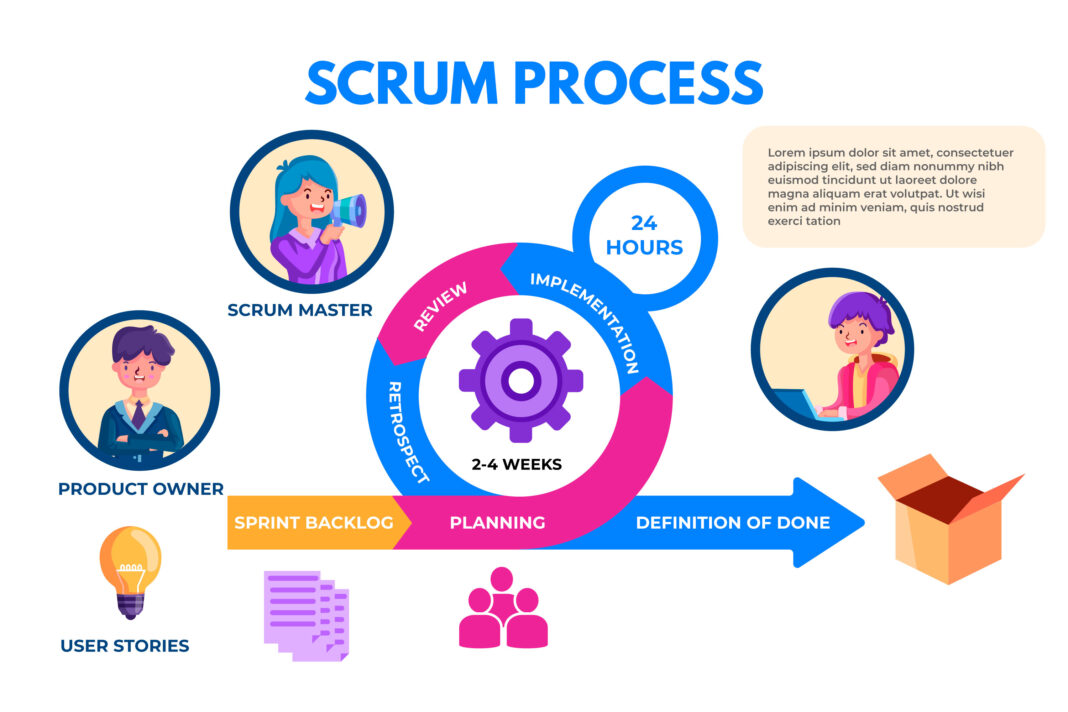Selecting the right project management methodology is one of the most critical decisions a development team or business can make. The choice between Agile and Waterfall impacts everything from project timelines and budgets to team dynamics and client satisfaction.

Agile, known for its flexibility and iterative approach, has gained immense popularity in software development and other fast-moving industries. Meanwhile, Waterfall, with its structured, phase-by-phase process, remains a trusted method for projects requiring strict documentation and predictable outcomes.
This in-depth comparison will explore:
- The fundamental principles of Agile and Waterfall
- Key differences in workflow, team structure, and risk management
- Real-world use cases for each methodology
- How to determine which approach is best for your project
- Common misconceptions and pitfalls to avoid
By the end of this guide, you’ll have a clear understanding of when to use Agile, when Waterfall is the better choice, and whether a hybrid approach might be the best solution.
the Waterfall Methodology
What Is the Waterfall Model?
The Waterfall methodology is a linear, sequential approach to project management. Each phase must be completed before the next begins, making it highly structured but inflexible to changes once development is underway.
Originally derived from manufacturing and construction industries, Waterfall became widely adopted in software development in the 1970s. Its rigid structure ensures thorough documentation and clear milestones, which can be crucial for compliance-heavy industries.
Key Phases of Waterfall
- Requirements Gathering
- All project specifications are documented in detail before any development begins.
- Stakeholders and clients must sign off on requirements, leaving little room for changes later.
- System Design
- Architects and engineers create a detailed technical blueprint of the system.
- This phase defines software architecture, hardware requirements, and data structures.
- Implementation (Development)
- Developers write code based on the approved design documents.
- No deviations from the initial plan are allowed without formal change requests.
- Testing
- Quality assurance (QA) teams test the system against the original requirements.
- Bugs are logged and fixed before moving to the next phase.
- Deployment
- The final product is released to end-users or clients.
- In some cases, a phased rollout is used to minimize risk.
- Maintenance
- Post-launch support, including bug fixes, updates, and minor enhancements.
Advantages of Waterfall
✔ Clear Structure – Every phase has defined inputs and outputs, reducing ambiguity.
✔ Predictable Timelines & Budgets – Costs and deadlines are set early, making financial planning easier.
✔ Strong Documentation – Ideal for industries requiring regulatory compliance (e.g., healthcare, finance).
✔ Easier for Large Teams – Well-suited for projects with multiple departments working sequentially.
Disadvantages of Waterfall
❌ Inflexible to Changes – Late-stage modifications are costly and disruptive.
❌ Late Testing Phase – Major flaws may only be discovered near the end, requiring expensive rework.
❌ Limited Client Involvement – Clients see the final product only after completion, increasing risk of dissatisfaction.
When to Use Waterfall
- Government & Defense Projects (strict compliance requirements)
- Construction & Engineering (blueprint-dependent work)
- Short-Term Projects with Fixed Requirements (no anticipated changes)
- Teams That Prefer Clear Milestones (less ambiguity in roles and deadlines)
Understanding the Agile Methodology
What Is Agile?
Agile is an iterative, incremental approach that prioritizes flexibility, collaboration, and customer feedback. Instead of a rigid plan, Agile breaks work into short cycles (sprints) that deliver functional increments of the product.
First introduced in the Agile Manifesto (2001), this methodology was designed to address the limitations of Waterfall in software development. Today, Agile is used across industries, from marketing to manufacturing.
Core Principles of Agile
- Customer Collaboration Over Contract Negotiation
- Continuous feedback ensures the product evolves based on real user needs.
- Responding to Change Over Following a Plan
- Agile welcomes requirement changes, even late in development.
- Working Software Over Comprehensive Documentation
- Focus on delivering functional features quickly rather than exhaustive paperwork.
- Individuals and Interactions Over Processes and Tools
- Team collaboration is prioritized over rigid procedures.
Popular Agile Frameworks
1. Scrum
- Sprints: Short development cycles (usually 2-4 weeks).
- Daily Stand-ups: Quick team check-ins to discuss progress and blockers.
- Sprint Review & Retrospective: Feedback sessions after each sprint.
2. Kanban
- Visual Workflow Management: Uses a board (To Do, In Progress, Done).
- Continuous Delivery: No fixed sprints; work is pulled as capacity allows.
3. Extreme Programming (XP)
- Pair Programming: Two developers work together on the same code.
- Test-Driven Development (TDD): Tests are written before the code.
Advantages of Agile
✔ Faster Time-to-Market – Functional features are delivered in weeks, not months.
✔ Higher Customer Satisfaction – Continuous feedback ensures the product meets real needs.
✔ Early Risk Detection – Issues are identified and resolved in early sprints.
✔ Adaptable to Changes – New requirements can be incorporated without derailing the project.
Disadvantages of Agile
❌ Requires High Client Involvement – Not all stakeholders can commit to frequent reviews.
❌ Less Predictable Budgets & Timelines – Scope changes can extend project duration.
❌ Not Ideal for Highly Regulated Industries – Lack of upfront documentation can be a compliance risk.
When to Use Agile
- Software Development (especially startups and SaaS companies)
- Projects with Unclear or Evolving Requirements
- Teams That Value Flexibility Over Structure
- Situations Where Early User Feedback is Critical
Agile vs. Waterfall: Detailed Comparison
1. Flexibility & Adaptability
- Waterfall: Rigid; changes require formal approvals and can be costly.
- Agile: Embraces change; requirements can evolve with each sprint.
2. Client Involvement
- Waterfall: Clients are involved only at the beginning and end.
- Agile: Clients participate in sprint reviews and provide ongoing feedback.
3. Risk Management
- Waterfall: High risk if requirements were misunderstood initially.
- Agile: Risks are identified and mitigated early through iterative testing.
4. Project Timelines
- Waterfall: Long development cycles (months to years).
- Agile: Short sprints (2-4 weeks) with frequent releases.
5. Documentation
- Waterfall: Extensive upfront documentation.
- Agile: Lightweight, just enough to keep the project moving.
6. Team Structure
- Waterfall: Specialized roles (analysts, developers, testers work in phases).
- Agile: Cross-functional teams (members collaborate daily).
7. Budget Control
- Waterfall: Fixed budget based on initial estimates.
- Agile: Variable costs due to evolving scope.
Which Methodology Should You Choose?
When to Choose Waterfall
✅ Fixed Requirements (no expected changes)
✅ Strict Compliance Needs (e.g., medical, aerospace)
✅ Predictable Budget & Timeline (no room for scope creep)
When to Choose Agile
✅ Dynamic Requirements (needs may evolve)
✅ Need for Rapid Prototyping (quick iterations)
✅ High Customer Collaboration (frequent feedback required)
Hybrid Approach (Wagile)
Some teams blend Waterfall and Agile:
- Waterfall for High-Level Planning (budgets, milestones)
- Agile for Execution (sprint-based development)
FAQs
Q: Can Agile work for large enterprises?
A: Yes, frameworks like SAFe (Scaled Agile Framework) help large organizations implement Agile effectively.
Q: Is Waterfall outdated?
A: No—it’s still widely used in industries like construction, manufacturing, and government.
Q: How do I convince stakeholders to switch to Agile?
A: Highlight benefits like faster ROI, reduced risk, and higher customer satisfaction.
Q: Which is better for cost control?
A: Waterfall for fixed budgets, Agile for reducing wasted effort.
Q: Can Agile and Waterfall be combined?
A: Yes, hybrid models (e.g., Wagile) are becoming more common.
Conclusion
There is no one-size-fits-all answer—Agile excels in adaptability, while Waterfall provides structure and predictability. Assess your project’s needs, team dynamics, and industry requirements before deciding.
Need help choosing? Consult a project management expert to tailor the best approach for your business.

